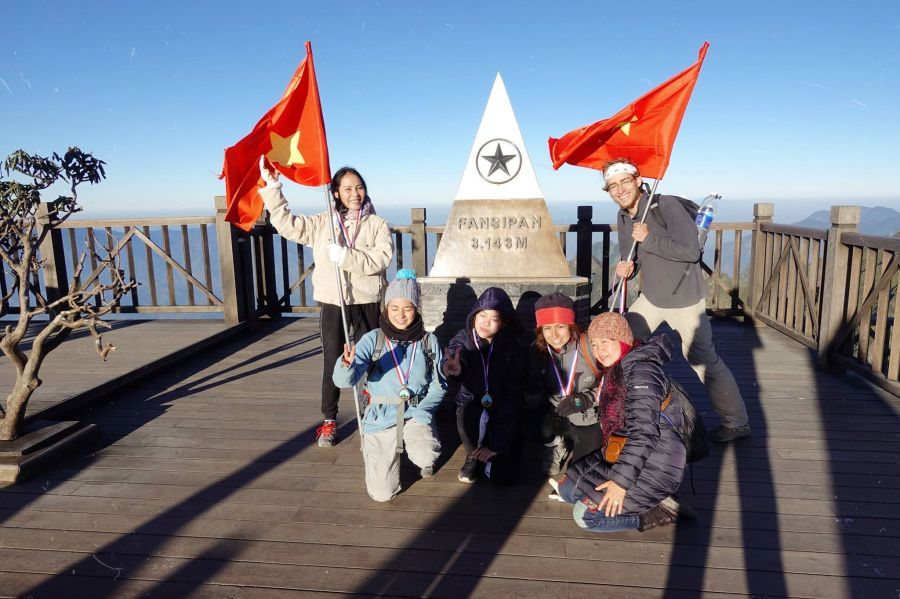Fansipan: Surprising Beauty Of The Roof Of Indochina
Fansipan is known as the “Roof of Indochina” and is a perfect destination for travelers who love attractions from high elevations. Seni World’s travel guide below will show you “Where is Fansipan?”, its history, culture, attractions, culture, and travel tips.
Table of Contents
ToggleIntroduction To Fansipan
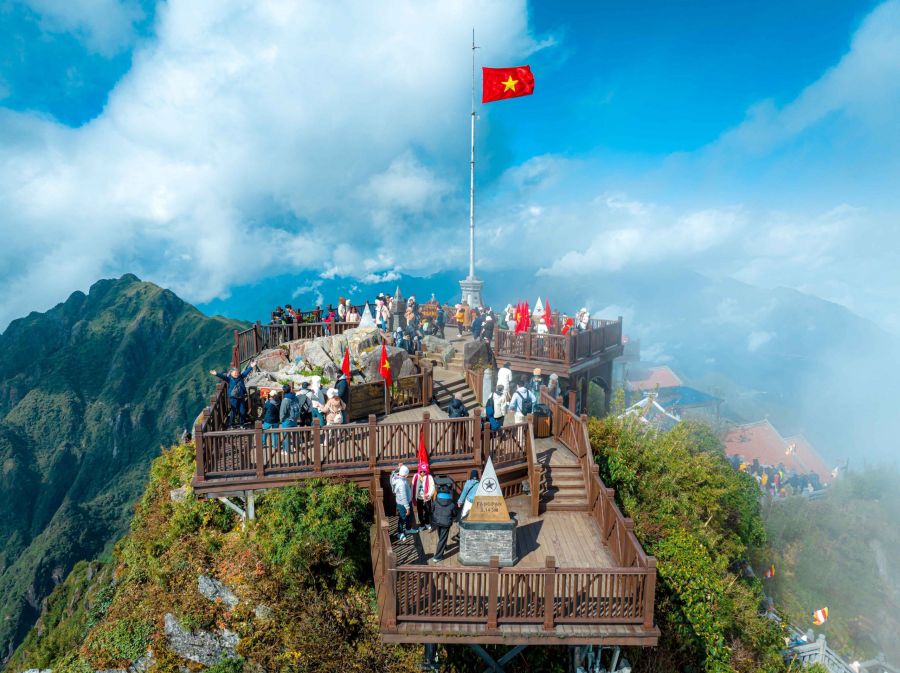
Standing about 3,143 meters above sea level, Fansipan is very famous among travelers all over the world and is known as the “Roof of Indochina”. The Fansipan peak is also the best in Vietnam, Laos, and Cambodia. Fansipan is positioned inside the Hoang Lien Son mountain range, about 9 kilometers southwest of Sapa Town. With the creation of the Fansipan cable car (Fansipan Legend), this tough peak now easily reaches more visitors, and it has become the most symbolic and hot-trending travel attraction.
Unveiling Fansipan, you can have breathtaking panoramic views that extend throughout the widespread mountain areas, as well as cloudy skies that are a surprising sight, in particular on clear days. Besides, the Fansipan journey through the modern cable car also shows you great views of Sapa’s rich terraced rice fields and deep valleys from the height. The complicated area at the top of Fansipan has wonderful pagodas with a grand Buddha statue, and spiritual pathways, providing you with a serene cultural and spiritual atmosphere.
History Of Fansipan
Fansipan proudly has a history of hundreds of thousands of years, which is between the Permian and Triassic periods, possibly around 250 – 260 million years ago. Therefore, it is very revered by local groups, and this is the primary reason why nowadays, more travelers choose this destination to witness its strong spiritual and natural grandeur.
The Hoang Lien Son mountain range, which is the “hometown” of Fansipan, is also the hometown of ethnic minority groups, such as Hmong, Tay, Red Dao, and Xa Pho people. Those local groups have lived in concord with the mountains for centuries, growing unique traditions deeply with the natural surroundings. Their long-lasting traditions include unique apparel of each group, complex embroidery patterns, festivals for harvests and the new year, like the Nao Song Festival of the Hmong.
Top 5 Iconic Attractions In Fansipan
Fansipan has many different attractions for you to explore. Let’s learn more about them in Seni World’s information below!
Fansipan Peak
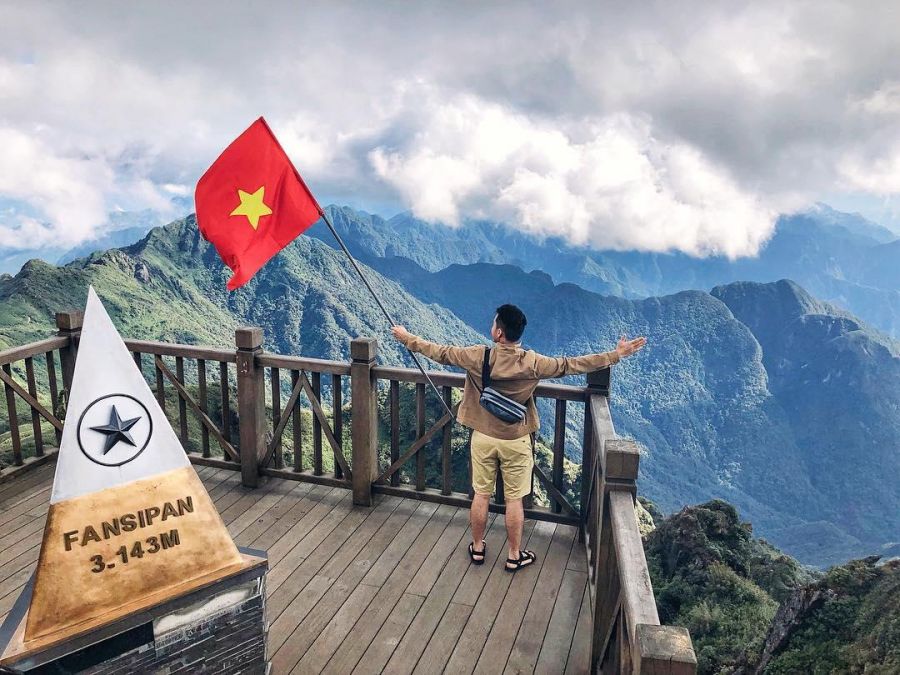
For travelers attracted by the rugged beauty of mountainous areas, reaching the top and enjoying the extreme cold of Fansipan temperature will be a perfect victory of their journey to Vietnam. The Fansipan peak is marked by a brilliant triangular stainless steel pillar, an icon of achievement, as well as a world-famous place for taking memorable photos for those who make this ascent.
Besides the physical marker, the top also has a special achievement sign that is the perseverance evidence of travelers who reach it. From this wonderful point, you can have an opportunity to see a captivating view: a full panorama of the Hoang Lien Son mountain range, huge cloudy skies, and the distant, undulating valleys.
Fansipan Cable Car
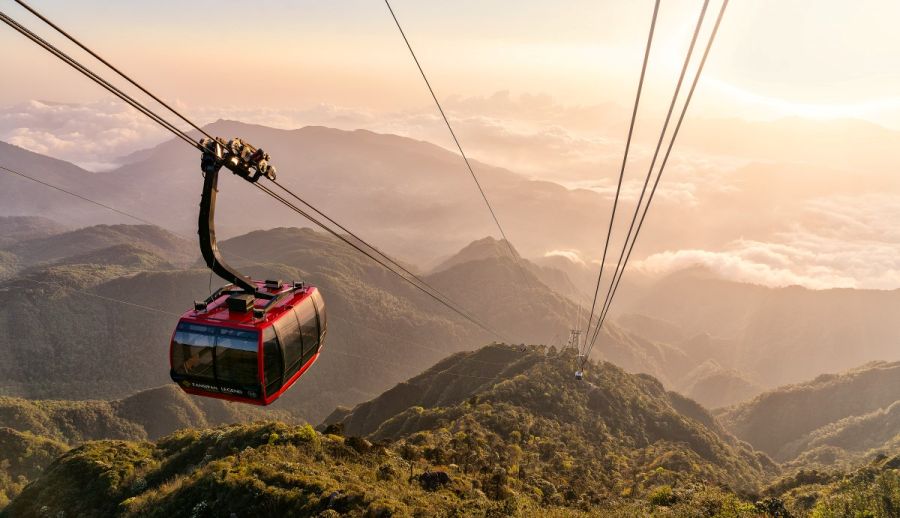
The Fansipan cable car, Fansipan Legend, is recognized as a world-record-holding cable car due to its length and height, helping travelers have the best and seamless ascent in the direction. You can soar gracefully over the fascinating Muong Hoa Valley, see the lush rice terraces cascade down hillsides, and visit many conventional villages from the cabin.
There is a 15-minute journey for you to enjoy the comfortable feeling, which the ordinary climbing way can not offer. Because the Fansipan cable car glides upwards, you can have a chance to constantly evolving vistas of the wonderful, huge mountains, especially on clear days.
Bich Van Thien Tu Pagoda
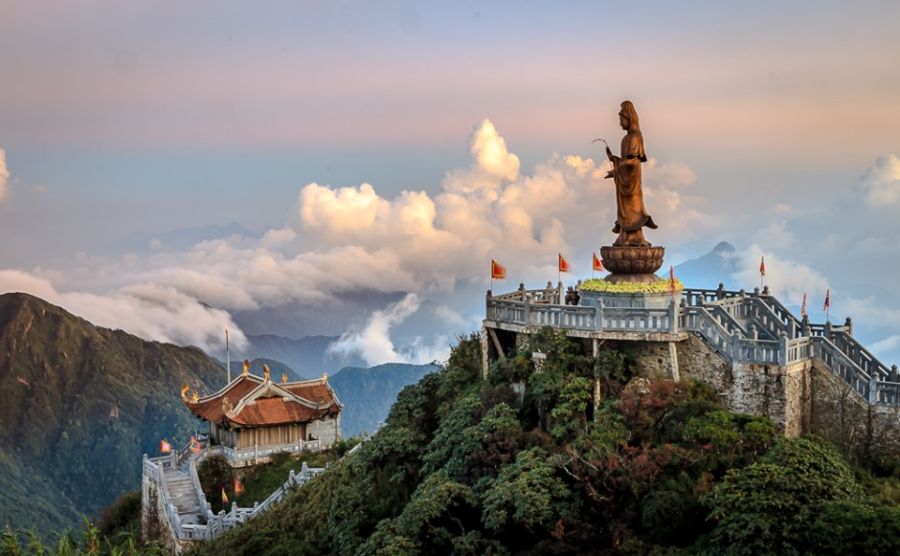
Bich Van Thien Tu Pagoda is a spiritual destination of the Fansipan complex above the clouds. Already has the Fansipan weather, Bich Van Thien Tu Pagoda frequently enveloped in mists that contribute to its tranquility and detachment from the busy, noisy world underneath.
Bich Van Thien Tu Pagoda features specific Tran dynasty architecture, with each detail, like gracefully curved roofs or intricately carved points, displaying centuries of cultural history of Vietnam. This place is also a deep connection between nature and spirituality.
Muong Hoa Funicular (Mountain Train)
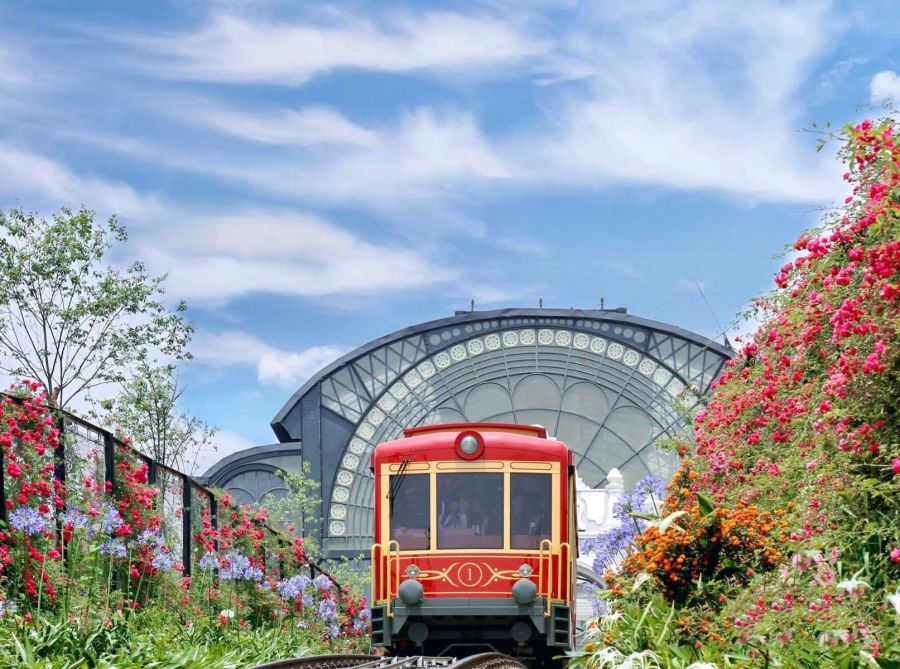
To connect the space between Sapa Town and the Fansipan cable car station, the Muong Hoa Funicular, which the friendly name “Mountain Train”, will be an interesting transport for you. This modern railway helps you through the picturesque scenery, meticulously crafted tunnels, and over viaducts.
Not only discover the Muong Hoa valley, which is well-known for its lush terraced rice fields, but you can also witness ethnic minority villages here. This adventure is short but memorable, bringing a fascinating inspiration, as well as a sense of freedom for you after busy days.
Arhat Path (La Han Path)
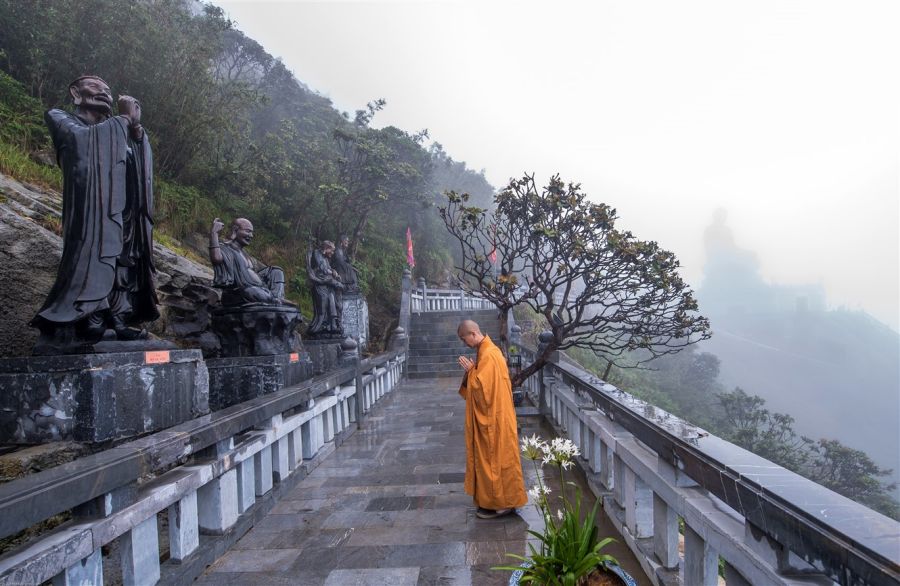
The Arhat Path (also called the La Han Path) is a destination for travelers on a spiritual journey on Fansipan. This charming pathway is about 800 meters long, amidst the white clouds and mountains. When walking on this path, you can feel both a peaceful atmosphere and the challenge of the peak.
The specialty of this area is a non-stop display of 18 meticulously crafted Arhat statues. Each of them represents a disciple of the Buddha who has attained enlightenment and has a unique posture and expression. These respected statues are located along the route, instructing travelers on their spiritual progression. Alongside them are colourful azalea bushes, adding a brilliant vibe to this place.
3 Cultural Experiences You Shouldn’t Miss In Fansipan
Cultural experiences are special things that travelers should not miss out on when traveling to Fansipan. Seni World will give you some hints about them.
Try Local Food In Fansipan
After investigating the Fansipan peak, you can return to the nearby Sapa Town or the surrounding villages to enjoy local food. There are many unique and delicious cuisines that you can not find anywhere else.
- First of all is Thang Co, a conventional, bold-flavored horse hotpot of Hmong people. However, you need to note that this food is made from internal organs. Some people can eat it, some can’t.
- Don’t forget to try the mountainous grilled skewers, consisting of various meats and vegetables.
- For a warm selection, the fresh salmon hotpot with many types of local vegetables is a must-try.
Visiting Ethnic Minority Villages
If you want to have a cultural immersion when traveling to Fansipan, let’s go to the ethnic minority villages located around Sapa Town. Not only see, but you can also engage and communicate freely and directly with the local groups like H’mong, Red Dao, Giay, and Tay people.
As soon as in these villages, you can have a chance to find out about their everyday life, witness their traditional crafts, such as indigo dyeing, weaving, or silver earrings making. Each ethnic group has its particular customs, languages, as well as traditional garb.
Shopping For Traditional Handicrafts
You can “bring” a piece of the cultural heritage of Fansipan in particular and Sapa in general home by buying handicrafts here. The Sapa Market, where ethnic minority people from surrounding villages sell their remarkable handicrafts, and you can buy anything you love.
You may be captivated by the intricately embroidered textiles in colourful hues and styles of the H’mong and Red Dao people. There are also silver earrings, traditional musical instruments, and various other handmade crafts.
Fansipan Entrance Fee
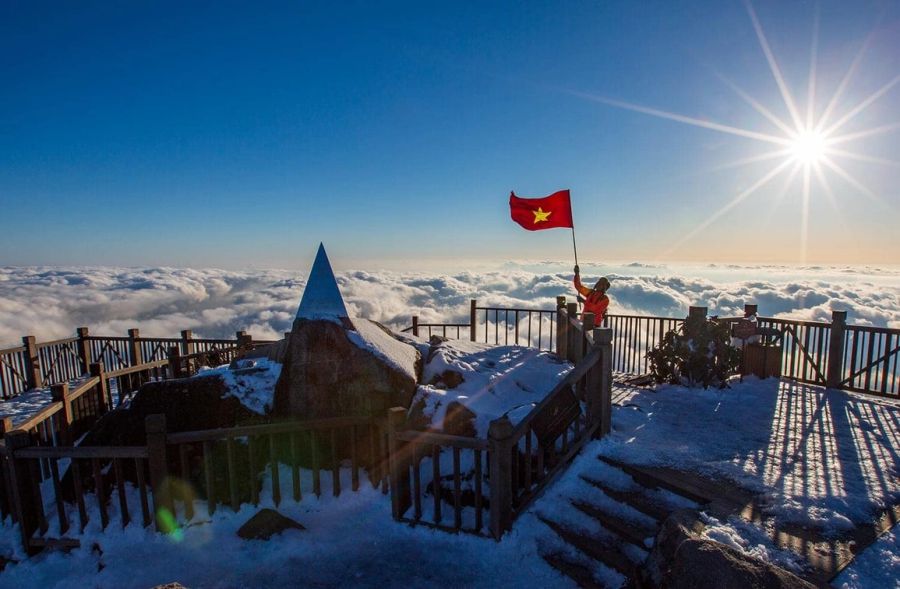
From January 1, 2025, there is a new official update from Sapa Town authorities that has applied a separate sightseeing fee for travelers to Fansipan Mountain and Cat Cat Waterfall, including:
| Visitors category | Fansipan ticket price |
| Visitors aged 16 and above | 10,000 VND |
| Children aged 6 – 15 | 5,000 VND |
| Children under 6, people with severe disabilities | Free |
If you choose the Fansipan cable car, Fansipan Legend for the round-trip, here is the detailed information about the ticket price:
| Visitors category | Fansipan ticket price |
| Adults (over 1.4m height) | Monday – Friday & Sunday: 800,000 VND |
| Saturday & Holidays: 850,000 VND | |
| Children (1m – 1.4m height) | 550,000 VND |
| Children under 1m | Free |
Cable Car Of Fansipan Opening Hours
Fansipan’s cable car typically operates from 07:30 AM to 05:30 PM every day for you to easily reach the top of this mountain. However, this time can vary depending on each day of the week, as well as the peak or the shoulder season of traveling. Knowing the crowded time here, you can flexibly plan your trip and have a wonderful exploration.
The best time to visit Fansipan is commonly Spring (from March to May), when the weather is moderate, making flowers like cherries and azaleas are in bloom. Besides, Autumn (from September to November) is also the best time to visit Fansipan because of clear skies, comfortable temperatures, and great golden rice terraces in the Sapa valleys.
How To Get To Fansipan
If you want to get to Fansipan, you should take a trip from Hanoi to Sapa Town, and from Sapa Town to Fansipan. Seni World will help you to know how to get to Fansipan from Sapa!
| Stage of Journey | Transportation | Time | Cost (one way) |
| Hanoi to Sapa (Lao Cai) | Overnight train | About 8 – 9 hours | 250,000 – 1,000,000 VND (10 – 40 USD) |
| Overnight sleeper bus | About 5 – 6 hours | 250,000 – 450,000 VND (10 – 18 USD) | |
| Limousine van or minibus | About 5 – 6 hours | 350,000 – 550,000 VND (14 – 22 USD) | |
| Sapa Town to Fansipan Legend Cable Car Station (Hoang Lien Station) | Muong Hoa funicular (mountain train) | About 6 – 8 minutes | 150,000 VND (6 USD) (one way) |
| Taxi or motorbike taxi | About 10 – 15 minutes | 50,000 – 100,000 VND (2 – 4 USD) | |
| Walking | About 30 – 40 minutes (uphill) | Free | |
| Fansipan Legend Cable Car Station to Fansipan Peak | Fansipan Legend cable car | About 15 minutes | 800,000 – 850,000 VND (32 – 34 USD) |
| Fansipan funicular (summit train) | About 2 minutes (short) | 150,000 VND (6 USD) (up) | |
| Walking (from the cable car upper station) | About 20 – 30 minutes (steps) | Free (included in cable car ticket) |
Things To Know Before Traveling To Fansipan
To have a safe and exciting journey in Fansipan, you need to remember some important travel tips below:
- Altitude sickness: Fansipan’s peak is 3,143 meters, which may cause some travelers to experience signs of dizziness, headache, or shortness of breath. You must walk slowly at the pinnacle and hydrate.
- The mountain weather: Fansipan could be sunny and after that, immediately foggy, rainy, or windy. Be careful and prepare more than one layer. You can easily feature or take away a layer as desired.
- Wear non-slip footwear: Both on the cable car and when strolling to the Fansipan complex, the exact grip of your footwear is critical, in particular if the weather is moist.
- Polite at religious sites: Get dressed modestly (shoulders and knees covered) and be respectful when visiting the statues, pagodas, as well as engage with local customs.
- Protect your skin: Although the Fansipan weather is cloudy, UV radiation is more potent at high altitudes. Therefore, apply sunscreen for your skin and face, put on a hat, and sunglasses.
- Comply with safety signs: You must be aware of all warning signs in this mountainous area and walk within the specified regions.
- Book tickets earlier in peak season: This will help you save time queuing for the cable car and feel comfortable and happy on this adventure.
Final Thoughts: Is Fansipan Worth Visiting?
Fansipan is a perfect way for you to discover to refresh yourself, and enjoy the cool atmosphere from the height. If you want to take a Fansipan trip, as well as consult interesting things to do in this mountainous area, and receive support for the visa process, let’s contact Seni World, a reputable tour operator from Vietnam. We are here to help you from A to Z on your Fansipan discovery journey.










